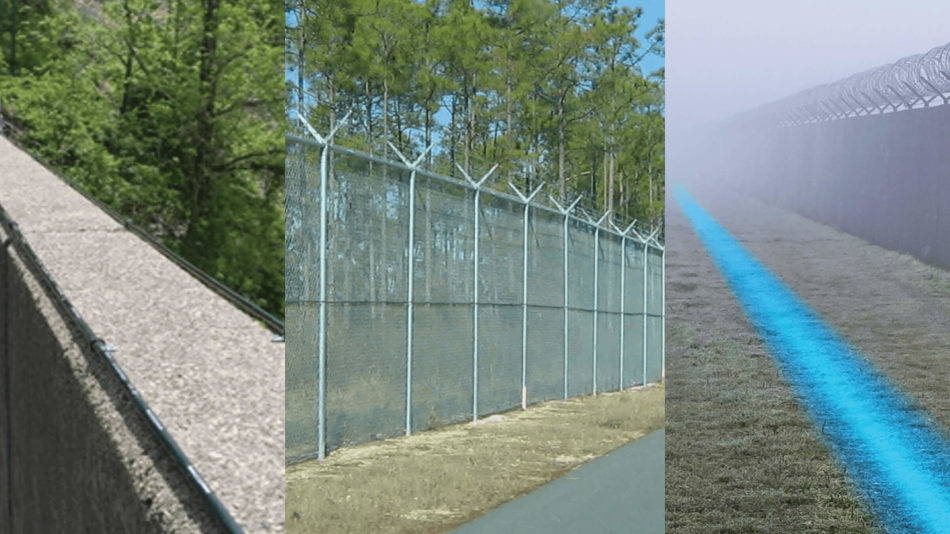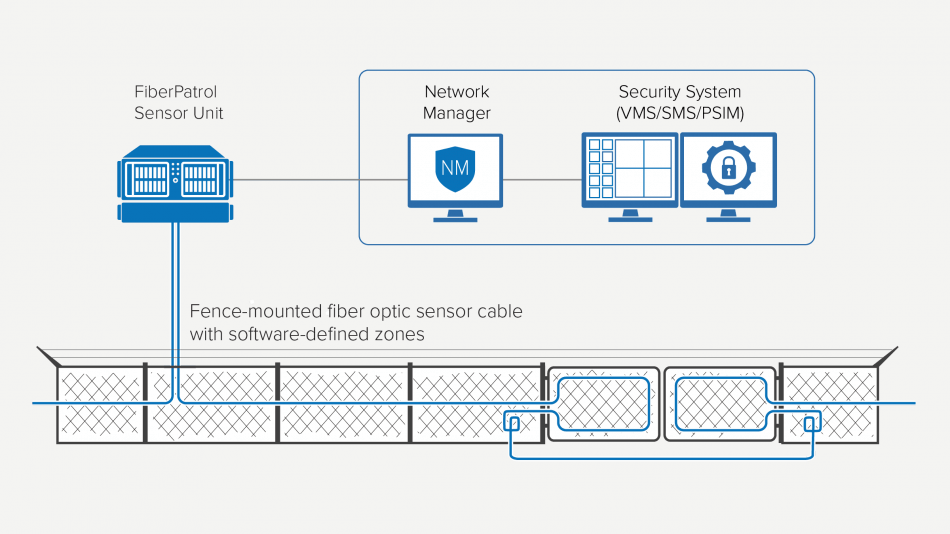The Ultimate Overview to Fiber Optic Protection Systems for Your Organization
In an age where safety and security issues are paramount for businesses, understanding the details of fiber optic innovation can be transformative. This overview lays out exactly how integrating fiber optic security systems not just improves information defense yet additionally supplies advantages like resistance to interference and real-time monitoring abilities.
Understanding Fiber Optic Technology

The core of a fiber optic cord is composed of a thin glass or plastic center, surrounded by a cladding layer that reflects light back into the core. Single-mode fibers are made for long-distance transmission, while multi-mode fibers are suitable for much shorter distances, often made use of within structures.
Fiber optics are not just faster but also much more safe and secure than traditional wiring. Their intrinsic resistance to electromagnetic disturbance and the difficulty of touching into the signal without detection make them a recommended selection for businesses focusing on information integrity and security. As companies significantly rely upon protected and efficient communication systems, understanding fiber optic modern technology ends up being essential for educated decision-making.
Secret Benefits of Fiber Optic Safety And Security
When taking into consideration security alternatives for a company, the benefits of fiber optic systems are especially compelling. Firstly, fiber optic technology offers phenomenal data transmission speeds and bandwidth capability, making it excellent for taking care of high-resolution video clip feeds from security cameras. This capacity makes certain that protection personnel obtain real-time information, improving general feedback times to potential security risks.
Moreover, fiber optic wires are inherently resistant to electromagnetic interference, which can jeopardize the honesty of typical copper-based systems. This resistance guarantees that the data transmitted stays safe and secure and nonstop, supplying an extra trustworthy protection framework. Furthermore, fiber optics are much less prone to physical damage, as they are made from glass instead than steel, reducing maintenance prices and downtime.
One more significant advantage is the raised scalability of fiber optic systems. As service demands evolve, fiber networks can be conveniently increased to accommodate additional safety devices without substantial overhauls to the existing infrastructure. Ultimately, fiber optic systems provide improved cybersecurity functions, including file encryption capabilities that safeguard delicate information from unauthorized gain access to. Collectively, these benefits make fiber optic security systems a robust selection for services seeking to enhance their safety steps.
Setup Refine and Considerations
Thinking about the intricacies entailed, the setup process of fiber optic protection systems requires cautious preparation and implementation. The preliminary step includes a thorough site assessment to determine ideal areas for cabling and devices. This assessment must take into consideration environmental factors, existing facilities, and try this site potential vulnerabilities.

Additionally, the setup has to follow regional building regulations and sector criteria. This might consist of collaborating with numerous stakeholders such as structure managers, IT teams, and safety employees to make certain smooth integration with existing systems.
Post-installation, rigorous testing is needed to validate system efficiency and recognize any kind of problems that might occur. By focusing on these factors to consider throughout the setup procedure, services can ensure a durable and efficient fiber optic security system that satisfies their specific protection needs.
Newest Advancements in Fiber Optic Safety
Current improvements in fiber optic technology have actually considerably improved the abilities of safety and security systems for companies. One of one of the most significant advancements is the integration of fiber optic sensors that can discover vibrations and intrusions along the border of a center. These sensors supply real-time monitoring, enabling fast reaction to possible violations.
Furthermore, the growth of distributed fiber optic picking up modern technology permits the continuous surveillance of huge areas with a solitary fiber cable television. This approach not only lowers installation costs but also improves the reliability of monitoring systems by eliminating the demand for several, separate sensors.
In addition, advancements in multiplexing techniques have made it possible for businesses to transfer huge amounts of data over fiber optic networks, enhancing the abilities of video surveillance systems. High-def video feeds can currently be sent out over fars away without loss of quality, making certain that protection employees have accessibility to clear and actionable information.
Finally, the use of expert system (AI) in combination with fiber optic systems is reinventing threat try here detection. AI formulas can examine data from fiber optic networks to determine uncommon patterns review or behaviors, permitting positive safety and security steps. These technologies jointly represent a substantial jump ahead in fiber optic protection innovation.
Selecting the Right System for Your Business
Choosing the ideal fiber optic safety system for your business is critical for guaranteeing optimum protection and assurance. To make an informed choice, assess your specific security requirements, thinking about aspects such as the dimension of your premises, the nature of your operations, and prospective vulnerabilities.
Begin by examining the level of security needed; as an example, high-risk settings may require sophisticated systems with integrated surveillance and invasion detection abilities. Next, consider scalability; as your business grows, your security system should be qualified of increasing to accommodate increased needs without significant overhauls.
Additionally, check out the reliability and efficiency of various systems. Try to find providers with recognized online reputations and customer reviews that vouch for their service top quality. It's also suggested to make inquiries concerning the technology's compatibility with existing infrastructure, making certain a seamless combination process.
Conclusion
In verdict, fiber optic security systems provide a durable solution for improving service protection infrastructures. The most current innovations even more bolster the efficiency of these systems, making certain that businesses remain protected and adaptable in an ever-evolving danger landscape.